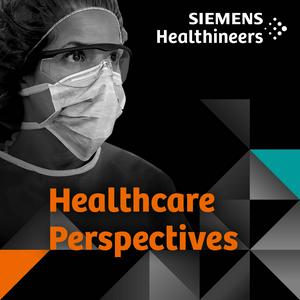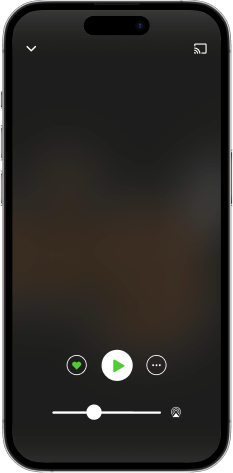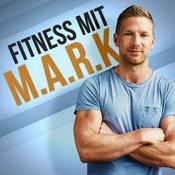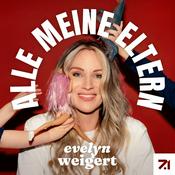Verfügbare Folgen
5 von 27
- Scaling education to advance health for allAccess to quality healthcare is still out of reach for millions worldwide — particularly in low- and middle-income countries and underserved rural areas. One of the biggest drivers of this gap is a shortage of trained healthcare workers, a challenge made worse by workforce migration, limited local training opportunities, and uneven distribution of resources.In this episode of Healthcare Perspectives, host Hagen Weissapfel, Director of Education and Customer Services for Global Access to Care at Siemens Healthineers, is joined by Melissa Culp, Executive Vice President of Member Engagement at the American Society of Radiologic Technologists (ASRT), and Dr. Geoff Ibbotson, surgeon and Executive Director of the Global Surgery Foundation (GSF). Together, they explore how education and training — scaled through digital innovation and local partnerships — can transform access to care for underserved communities.From stories of practicing in isolation in remote Nepal, to advancing imaging education in Malawi, to building global learning platforms like SURGHub, Melissa and Geoff share how sustainable, in-country solutions can empower healthcare professionals, break down systemic barriers, and save lives.What you’ll learn in this episode:Why education is one of the most sustainable forms of impact in global healthHow digital learning platforms like SURGHub are connecting providers in over 200 countriesThe role of local leadership and trust in building effective training programsHow public awareness campaigns can inspire the next generation of medical imaging professionalsThe life-or-death consequences of gaps in surgical technology access — and how training can close themWhy small, targeted investments can yield measurable improvements in health outcomesConnect with Hagen WeissapfelLinkedInConnect with Melissa CulpLinkedInConnect with Geoff IbbotsonLinkedIn Hosted on Acast. See acast.com/privacy for more information.--------30:38
- AI and sustainability in radiologyIs it possible for artificial intelligence to make healthcare more environmentally sustainable? In the field of radiology, AI may prove to be transformative. It has the potential to streamline processes, cut costs, and increase accuracy in imaging, diagnostics, and prevention.When we talk about sustainability, we often think of carbon emissions or climate change. But environmental sustainability means something much broader in healthcare: it’s about how we can preserve resources, whether cost, energy, human capital, and reduce waste and pollution, all while improving health outcomes for everyone, everywhere.Today, host Vibhas Deshpande, Head of Sustainability Innovation and Research, Americas at Siemens Healthineers, welcomes Dr. Kate Hanneman, cardiac radiologist at the University of Toronto; Dr. Charles Goh, Chief Medical Informatics Officer at Singapore General Hospital; and Tobias Heimann, head of the Department of Artificial Intelligence Germany at Siemens Healthineers, to explore how the rise of artificial intelligence is reshaping the conversation around sustainability in healthcare. Together, they’re helping define what “responsible AI” really means—and what steps healthcare leaders can take now to ensure that AI benefits patients, clinicians and health systems and preserves global resources.What you’ll learn in this episode:Why eliminating data redundancy and using foundational models are keys to keeping AI development sustainableAI is used to shorten imaging exams while still maintaining a high image quality, which contributes to energy savingsAI can help to arrive at correct diagnosis by improving clinical decision making and alignment to best practice to minimize waste in health systemsSustainability is more than a metric of emissions or kilowatts—it’s also about how we invest intellectual and clinical capital, such as freeing clinicians to do what humans can do best: connect, interpret, and care.Connect with Vibhas DeshpandeLinkedIn Connect with Kate HannemanLinkedInConnect with Charles GohLinkedInConnect with Tobias HeimannLinkedIn Hosted on Acast. See acast.com/privacy for more information.--------18:27
- Advancing liver care with non-invasive tests (Part 2)Metabolic dysfunction-associated steatotic liver disease (MASLD), also known as fatty liver disease, is a chronic liver condition that affects nearly 1 in 3 people worldwide. It is closely linked to obesity, type 2 diabetes, and metabolic syndrome. Unchecked, it can progress to a more severe form of disease called Metabolic Dysfunction-Associated Steatohepatitis (MASH). Prognosticating the risk of disease progression in MASLD and MASH has traditionally involved liver biopsy, a process that involves removing a tissue sample with a hollow needle and then examining the sample under a microscope to diagnose and stage disease. However, biopsy has many limitations. Additionally, drug development for MASLD and MASH has proceeded slowly in part due to a reliance on liver biopsy to determine drug efficacy.Recently, increasing evidence is suggesting that non-invasive options, for example, imaging examinations along with blood tests that assess likelihood of disease progression such as the Enhanced Liver Fibrosis (ELF) Test, may effectively reduce the need for the more invasive alternative. Key experts in MASLD and MASH share their perspectives about how clinical evidence supports a shift in the way patients with MASLD and MASH could be evaluated in clinical practice and in research.Host Matt Gee, Director of Collaborations and External Engagement at Siemens Healthineers, is joined by Prof. William Rosenberg, Deputy Director of the Institute for Liver and Digestive Health at University College London as well as Dr. Veronica Miller, Director of the Forum for Collaborative Research at the University of California, Berkeley School of Public Health; Dr. Arun Sanyal, Professor of Medicine, Physiology, and Molecular Pathology in the Division of Gastroenterology at Virginia Commonwealth University; and Dr. Michelle Long, International Medical Vice President of Metabolic Dysfunction-Associated Steatohepatitis at Novo Nordisk and Associate Professor in the Section of Gastroenterology and Hepatology at Boston University.What you’ll learn in this episode:Liver biopsy creates several obstacles for patients and has limitationsDrug development faces challenges by the reliance on biopsy as a measure of treatment effectivenessNon-invasive tools may be suitable alternatives to liver biopsy both in clinical practice and in drug developmentConnect with Matt GeeLinkedIn Connect with Veronica MillerLinkedInConnect with William RosenbergLinkedInConnect with Michelle LongLinkedInConnect with Arun SanyalVCU.edu Hosted on Acast. See acast.com/privacy for more information.--------28:19
- Understanding liver health and MASLD (Part 1)A reversible liver condition is the fastest growing cause of liver transplantation in Western countries: Metabolic dysfunction-associated steatotic liver disease—or MASLD—affects patients worldwide. It’s characterized by excessive fat accumulation in the liver and can progress into more severe forms of liver disease, potentially resulting in fibrosis, cirrhosis and liver failure.Risk factors for developing liver disease include obesity, insulin resistance, type 2 diabetes, and metabolic syndrome. Genetics, unhealthy dietary habits, and a sedentary lifestyle can also play significant roles in its development. Diagnosis typically involves imaging examinations along with blood tests that assess liver function and rule out other causes of liver disease.Disease management focuses on lifestyle modifications such as diet and exercise, though new medications are now being prescribed to slow and potentially reverse this condition. Regular monitoring of disease progression is also crucial for successful treatment.In this episode, experts in the field of liver disease address the progress happening in the recognition, diagnosis and treatment of the disease. Host Matt Gee, Director of Collaborations and External Engagement at Siemens Healthineers, is joined by Dr. Michelle Long, International Medical Vice President of Metabolic Dysfunction-Associated Steatohepatitis at Novo Nordisk and Director of Clinical Research for the Section of Gastroenterology and Hepatology at Boston University; Dr. Arun Sanyal, Professor of Medicine, Physiology, and Molecular Pathology in the Division of Gastroenterology at Virginia Commonwealth University; and Michael Betel, President and Founder of the Fatty Liver Alliance.What you’ll learn in this episode:One of the biggest obstacles to diagnosing MASLD before it progresses stems from the lack of visibility and awareness of the diseaseMASLD is a reversible disease when caught in timeMASLD is more complex than a patient’s diet or lifestyle—metabolic dysfunction plays a role Non-invasive testing has become an important tool in advancing patient careConnect with Matt GeeLinkedIn Connect with Michelle LongLinkedInConnect with Arun SanyalVCU.eduConnect with Michael BetelLinkedIn Hosted on Acast. See acast.com/privacy for more information.--------26:09
- The future of radiotherapyRadiotherapy plays a vital role in cancer treatment. In Europe alone, incidents of cancer are projected to rise around 20% by 2040, mainly due to an increasingly aging population. It’s numbers like these that emphasize the importance of pushing boundaries in radiotherapy. With AI-optimized workflows, it’s possible to speed up treatment planning and ensure highly personalized therapies and technology like auto contouring can protect healthy organs during irradiation by means of AI. This implementation, however, is often met with challenges like staff shortages and inconsistencies with data collection, highlighting the need for more efficient implementation strategies. In this episode, experts in the fields of radiotherapy and cancer treatment address the amazing headway being made in the world of radiotherapy as well as some of the key roles that current technology can play in the future.Host Sasa Mutic, President of Radiation Oncology Solutions at the Varian Business Area of Siemens Healthineers, is joined by Valery Lemmens, a member of the Board of Directors at Maastro Radiotherapy Clinic in the Netherlands and creator of the Dutch Cancer Atlas; as well as Joost Verhoeff, radiation oncologist and professor of radiotherapy at Amsterdam University Medical Center; and Indrin Chetty, Vice Chair and Director of the Division of Medical Physics at Cedars-Sinai in Los Angeles.What you’ll learn in this episode:By using a digital twin, medical professionals can review existing health records and continually compare that information with patient dataWith adaptive radiotherapy, radiation dosages can be tailored to circumstances like tumor size, type, and position and proximity to vital organsThe Dutch Cancer Atlas interprets and publishes data in a context that increases awareness of regional differences in cancer incidentsThe unique role that data plays in the advancement of cancer careThe deep troves of data that already exist within radiotherapy departments can play a key role in the integration of AI into cancer treatmentsWidespread availability of data creates the opportunity for automated treatment planning and outcome predictionConnect with Sasa MuticLinkedIn Connect with Valery LemmensLinkedInConnect with Joost VerhoeffLinkedInIndrin ChettyLinkedIn Hosted on Acast. See acast.com/privacy for more information.--------23:50
Weitere Gesundheit und Fitness Podcasts
Trending Gesundheit und Fitness Podcasts
Über Healthcare Perspectives
Healthcare Perspectives is a podcast by Siemens Healthineers about medical breakthroughs with the power to improve the lives of patients and their families everywhere. Meet thought leaders from across the globe, as we discuss our shared vision of fighting the world's most threatening diseases through breakthrough medical technology. Hear how technologies like patient twinning, precision therapy and digitization help medical professionals to make the best possible decisions.6f0570b4ce66aaf30246c7f725e75cf511acc6f2 Hosted on Acast. See acast.com/privacy for more information.
Podcast-WebsiteHöre Healthcare Perspectives, Dr. Matthias Riedl - So geht gesunde Ernährung und viele andere Podcasts aus aller Welt mit der radio.de-App

Hol dir die kostenlose radio.de App
- Sender und Podcasts favorisieren
- Streamen via Wifi oder Bluetooth
- Unterstützt Carplay & Android Auto
- viele weitere App Funktionen
Hol dir die kostenlose radio.de App
- Sender und Podcasts favorisieren
- Streamen via Wifi oder Bluetooth
- Unterstützt Carplay & Android Auto
- viele weitere App Funktionen


Healthcare Perspectives
Code scannen,
App laden,
loshören.
App laden,
loshören.







































